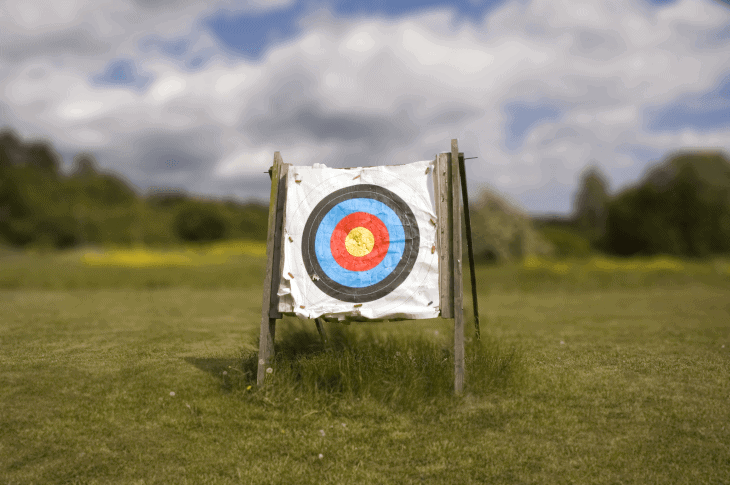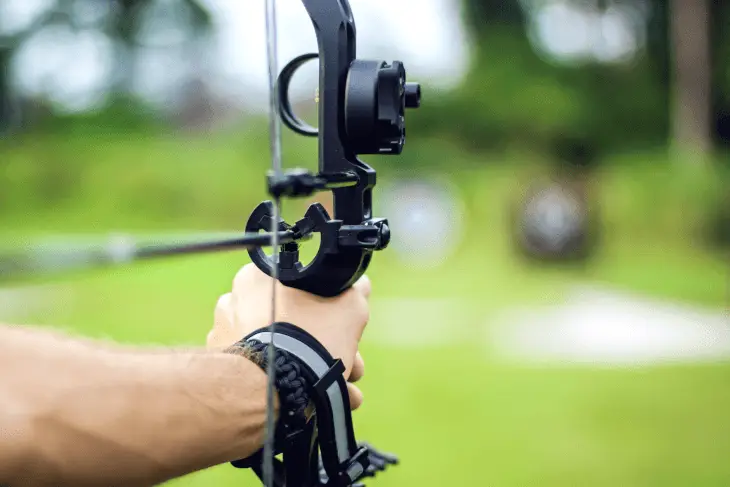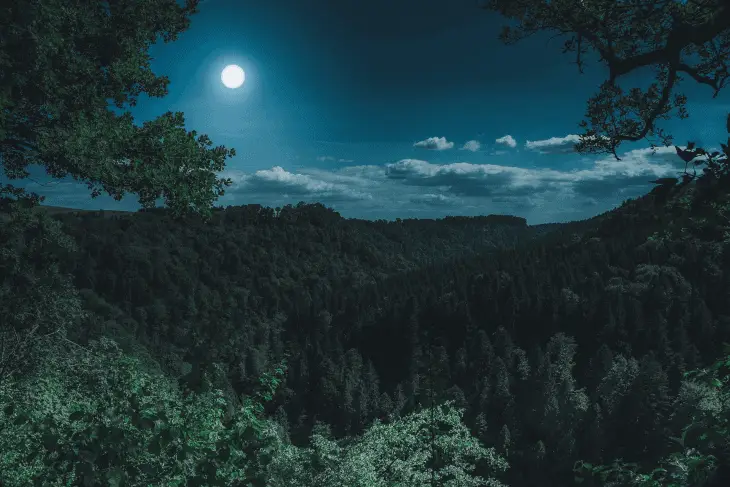Note: Our site links to archery and bowhunting products sold by outside vendors, and we may earn a small commission if you purchase an item after clicking one of these links. Learn more about our affiliate program.
If you ask a new archer what piece of equipment they’ll need to use in order to aim a bow, they’ll probably answer, “the bow sight.” And while they’re right—those are certainly important—target archers and bowhunters often overlook the importance of arrow rests. They have a big impact on arrow flight, and when used correctly, they can provide great arrow stability with almost total fletching clearance, and do so very quietly.
So in this post, we’ll go over our picks for the best drop-away arrow rest. It’s one of the most popular types of rests, and it’s great for both bowhunting and target shooting, so we’ll take a good look at our favorite models and why they stand out.
After that, because we like to think of ourselves as an educational site, we’ll offer a quick clinic on arrow rests: the different types available, which are good for target shooting and which are good for hunting, and finally, we’ll throw in our two cents in the great debate over drop-away rests vs. containment rests.
Alright, let’s jump in:
Summaries: Our Favorite Drop-Away Arrow Rests
We go into more detail below about each of the rests, but here is a quick summary of the drop-away arrow rests we think make the grade:
- Full containment;Noise reducing felt;Launcher arm stays up on let down
The Ultra Rest Hunter Arrow Rest Drop Away: a great basic model, with a helpful “full-draw” indicator;
- Noise reducing designs with laser cut felt, cam/brake, and rubber dampeners
- Vertical, Horizontal and Overdraw adjustments
- Precision CNC aluminum, Stainless Steel, and Delrin components
The QAD Ultra Rest Pro Series LD Drop Away Rest: easy to use and good for quick nocking;
- Soft rubber over-molding eliminates need for excess moleskin;Windage and elevation adjustment;Internal dampening system;Arrow containment system;Offset cord won't interfere with arrow travel
The Ripcord Code Red Drop-Away Arrow Rest: excellent containment, designed for silence, with a “drop-dead” brake feature on the launcher;
- Unmatched reliability and ease of set up. Limb driven
- Eliminates unwanted arrow contact with your bow making you stealthier than ever
- Hunt undetected with the Propel arrow rest's deadly quiet operation
The Trophy Ridge Propel Limb Driven Rest, also quiet, designed for great clearance, and made for shooting shorter arrows;
- RUGGED & LIGHT - The Hybrid Target Pro takes design elements from the proven VersaRest platform in a more streamline package that is 20% lighter
- ZERO STOP TECHNOLOGY - The Hybrid Hunter Pro adopts adjustment features like Zero Stop Technology for the up and down positions of the launcher which makes for an absolute repeatable launcher position ensuring accuracy
- ULTIMATE ACCURACY - Coupled with the 8-sided, non-slip, compression clamp design of the lever arm and the anti-bounce back dampening coil give you all the elements for ultimate tunability to maximize your accuracy
The Hamskea Archery Hybrid Hunter Drop Away Rest: very well built, easy to use, and very accurate; and finally
- Noise reducing laser cut felt and cobber dampeners
- Sleek curved capture bar for more versatility
- Total Arrow Containment
The Quality Archery Designs Ultra-Rest HDX: our choice for the best drop-away arrow rest overall. It has a ton of features designed for silent shots, full clearance, and high FPS bows.

Full Drop-Away Arrow Rest Reviews: In Depth
Here are our “long-form” reviews of some of the drop-away rests we like. Each of the models below is designed to provide interruption-free arrow flight and full fletching clearance, but each one has a couple of features that make it unique. Let’s take a closer look:
The Quality Archery Designs Ultra Hunter Rest
Our pick for best “entry-level” drop rest that’s easy to install and use
- Full containment;Noise reducing felt;Launcher arm stays up on let down
Quality Archery Designs manufacturers a number of different arrows rests, for “very good” to “very, very high-end.” Their Ultra Hunter Arrow Rest is their mid-range option, and there are a few things that make it worthwhile, in our humble opinion:
It’s got a very deep “V,” designed to keep the arrow stationary as you move about. The containment bars that a lot of models have are helpful—and this model actually has a containment bar residing over the rest itself—but they’re not worth much if the “V” isn’t deep enough;
The “V” itself and the containment bar are made from felt, designed for a very silent draw—something important to most bow-hunters; and
It’s got a “full-draw indicator” that alerts you whether the launcher is in position when you’re at full draw. That’s a nice touch, and you’re good to go and ready to shoot, everything should line up.
QAD actually makes a couple different drop rests we like (and review one or two more below). One last thing: this model is for righties only, so if you’re a lefty, you should keep lookin’!
Quality Archery Designs UltraRest Pro Series LD
The next step up offering Lock-Down Technology
- Noise reducing designs with laser cut felt, cam/brake, and rubber dampeners
- Vertical, Horizontal and Overdraw adjustments
- Precision CNC aluminum, Stainless Steel, and Delrin components
The QAD UltraRest Pro LD is a popular drop-away arrow rest, favored by both hunters and target archers for its durability and precision. Its full arrow containment design ensures the arrow stays securely in place, offering peace of mind during movement, especially in hunting scenarios. The rest’s drop-away mechanism quickly clears the arrow path during release, reducing any interference for a cleaner, more accurate shot.
One of the standout features is the Lock-Down Technology, which prevents bounce-back after the rest drops, ensuring consistent arrow flight. The rest also includes micro-adjustments for both vertical and horizontal tuning, allowing archers to fine-tune their setup for optimal performance.
Hunters particularly benefit from the rest’s noise-dampening features, which keep the operation quiet, and its durable construction, designed to withstand rough outdoor use. The containment and anti-vibration technology add to the overall effectiveness in minimizing noise, an important factor when stalking game.
Though slightly more expensive than some other rests and a bit heavier, the QAD UltraRest Pro LD offers superior performance and durability.
Ripcord Code Red Drop-Away Arrow Rest
A high-end pick with excellent containment, low sound, and little vibration
- Soft rubber over-molding eliminates need for excess moleskin;Windage and elevation adjustment;Internal dampening system;Arrow containment system;Offset cord won't interfere with arrow travel
With the Ripcord Code Red Drop-Away Arrow Rest, we’re starting to move into the “higher-end” models. It’s got some features that make it stand out:
The actual rest on this one is so deep it looks like a tuning fork. It’s got a truly deep “V” designed for arrow stability, with a containment bar north of the rest for some added stability insurance;
It’s got a “drop-dead” brake feature, that eliminates bounce-back on the rest. On some models, after releasing an arrow, the rest drops forward upon release, but then snaps back—making a lot of noise, and sometimes interfering with fletching clearance. The brake feature is designed to keep that from happening;
It’s got an internal dampening system, designed to cut down on noise. Many drop-aways have external and internal parts that clang and clatter, and the good ones put protective material on the external parts to silence them a little bit. The really good ones (like this one) design the drop-aways so that the internal parts are silent; and
This last feature isn’t important, but we’ll mention it anyway: “Code Red” is a great name for an arrow rest. There are so many fantastically-named archery products, and “Code Red,” in our humble opinion, is among them.
The Trophy Ridge Propel Limb Driven Rest
A high-quality all-around drop-away rest
- Unmatched reliability and ease of set up. Limb driven
- Eliminates unwanted arrow contact with your bow making you stealthier than ever
- Hunt undetected with the Propel arrow rest's deadly quiet operation
The Trophy Ridge Propel Limb Driven Rest offers a reliable, budget-friendly option for hunters and target shooters who want the benefits of a limb-driven system without breaking the bank. Limb-driven rests are known for their quick response, and the Propel is no different, providing fast, consistent arrow clearance that helps improve accuracy. It’s designed to drop at the perfect moment, giving you smooth shots with minimal interference.
One of the highlights of the Propel is its ease of setup and adjustment. With micro-adjustability for windage and elevation, you can fine-tune this rest to your specific bow and shooting style. Plus, it’s designed with full arrow containment, which means your arrow stays secure in the rest even when you’re in less-than-ideal shooting positions or on the move.
Built with solid materials, it’s capable of handling the rough conditions of outdoor use while maintaining quiet operation. For hunters who want a rest that provides reliable performance at a lower price point, the Propel is a great option. It may not have all the bells and whistles of higher-end models, but it delivers where it counts—consistency, ease of use, and dependable arrow containment.
Hamskea Hunter Hybrid Rest
A limb driven model that offers tons of adjustments
- Soft rubber over-molding eliminates need for excess moleskin;Windage and elevation adjustment;Internal dampening system;Arrow containment system;Offset cord won't interfere with arrow travel
The Hamskea Hybrid Hunter Pro is one of those drop-away rests that delivers on both performance and reliability, making it a favorite for bowhunters looking for something tough and dependable. Right off the bat, the limb-driven system is what sets this rest apart. Limb-driven rests tend to be faster and more reliable, and the Hybrid Hunter Pro doesn’t disappoint. It’s designed to drop the moment you release your arrow, giving you consistent, clean shots every time.
One thing I really like about this rest is how easy it is to tune. You can micro-adjust both windage and elevation with precision, which is crucial when you want to dial in your setup just right. Plus, the rest provides full containment, so your arrow stays locked in place until you’re ready to shoot. Whether you’re on a steep angle or moving through the woods, you can trust that your arrow won’t fall out or shift around.
Another big plus is how rugged this rest is. Built from high-quality materials, it can handle the wear and tear of outdoor adventures, even in harsh weather. The smooth operation and limb-driven mechanics make sure you don’t sacrifice stealth for performance.
Overall, the Hamskea Hybrid Hunter Pro is a solid choice for hunters who want a durable, quiet, and easy-to-tune drop-away rest. It might not be the cheapest option out there, but for the quality and consistency you get, it’s well worth the investment.
Quality Archery Designs Ultra-Rest HDX
In our opinion, the top drop-away arrow rest overall, with a LOT of fantastic features
- Noise reducing laser cut felt and cobber dampeners
- Sleek curved capture bar for more versatility
- Total Arrow Containment
As we mentioned earlier, Quality Archery offer a range of rests that we’d rank from “very good” to “extremely good,” and we consider all of them, really, to be worthwhile options. The Quality Archery Designs Ultra-Rest HDX, though, is their top-of-the-line offering, for the following reasons:
It’s designed for silence. It’s made from material that inhibits sounds—the felt is pretty silent—but it’s the construction of the tool that sets it apart: it features anti-vibration technology designed to gobble up sound, and that’s a draw for bowhunters (but great for any archer, really);
It features VDT, which stands for “Velocity Drop-Away Technology.” On a lot of drop-away arrow rests, the rest literally drops away when you shoot it—because the rest is attached to the cable, when you release the bow string, the bow string moves forward and allows the rest to fall forward. Here, the launcher speeds forward into the “down” position, and that allows for more arrow clearance; and
It’s got “lock-down,” meaning that when the launcher descents forward, it locks in the “down” position, so that it won’t kick up and mess with arrow flight or make noise.
All in all, the Ultra Rest HDX is a high-end model with a lot of fantastic features that most other drop-away rests don’t have, and it gets our vote for best drop-away arrow rest overall.
Alright! That wraps it up for the reviews. Let’s now take a closer look at arrow rests, and learn a thing or two:
The Different Types of Arrow Rests: A Quick Review
Several different types of arrow rests exist and finding the “right one” for you can depend on a variety of factors, such as your shooting style, the type of arrow you use and what you’re shooting at.
Below, we’ll look at the most common types of arrow rests you’ll find. The three types below—drop-away, contain, and pass-through—are usually found on compound bows (although you may see them on a recurve here and there). At the end of the section, we’ll briefly discuss the rests you can find on your recurve, just for good measure.
Drop-Away Arrow Rests: Loved by Hunters Far and Wide
One of the most satisfying things about archery is that the names for various tools can actually give you a clue about what they do. Drop-away rests hold your arrow in place while you draw, and when you release the arrow, they “drop away” so that the flight of the arrow is totally unimpeded.
They’re easy to spot because of their “V” shape, and that shape is important—you put the front of the arrow in the V, draw the bow, and when you release, the V falls forward to get out of the way of the arrow (and that’s why they’re also occasionally called “fall-away rests”).
The big advantage of drop-away rests is that when they’re tuned right—and we’ll talk about that in a moment—no part of the arrow, or the arrow’s fletching, should touch the rest after it’s released. That’s not the case with most other arrows rests—they tend to get in the way of the arrow, or the arrow’s fletchings, in some way, and that can mess up your shot—even if you’re 100% on target and your form is perfect. Having a clear and unimpeded path for your arrow to travel is the biggest advantage of a drop-away rest.
Drop-away rests aren’t perfect, though. There are two concerns people usually have:
1) Reliability. The arrow may drop or fall out of the rest prematurely. That can be a huge pain—especially if you’re hunting—and it was a problem on earlier models. To combat that problem, many modern designs have notches or bars at the top of the rest that securely hold the arrow in place until release. If you tend to how the bow straight up and down, or if you tend to shoot from a tree stand, chances are you arrow will stay in place, but it can be a helpful feature to have if you’re letting off some “gymnast-style” shots.
2). Timing. Another critical concern when using a drop-away arrow rest is getting the timing of the drop right. You don’t want the rest to fall too quickly, before the arrow has an established flight pattern, or else you’ll end up with an arrow that falls to the ground or that crash lands before reaching its target. Tuning is a big deal when you’re using a drop-away rest, and you’ll need to take the time to make sure it’s set up correctly (and because it is a somewhat advanced tool, for more complicated models, it may make sense to bring it to someone who knows what they’re doing). Once the rest is tuned properly, it’s usually good to go.
A decade or two ago, drop-away rests were 1) very new, and 2) not popular. They were difficult to assemble, difficult to use, and fell apart right when you needed them to work. They’ve come a long way in recent years, it’s a wonderful thing to see how many hunters rely on them in the field.
Containment Rests, aka Capture Rests: Also Great for Hunting
A containment arrow rest, sometimes called a capture rest, encircles the shaft of the arrow with thick (and sometimes thin) bristles, so that the arrow is held in place until you release the bow string and fire the arrow.
Containment rests have a few distinct advantages, including:
1) It gets rid of the possibility of the arrow falling to the ground before you shoot. For that reason, containment rests are usually ideal for beginning archers or for younger people who are getting into archery. Because there’s no need to worry that the arrow will fall out of place, a newbie archer can focus on developing their form and on shooting with greater accuracy. In fact, you’ll find that a lot of compound bows come with whisker biscuits (a type of containment rest) pre-installed. There’s another reason containment rests are great, though, and that’s because…
2) They truly hold the arrow in place, even when you’re shooting from odd angles. For target archers, who aim at a stationary target from level ground, that’s not really a big deal, but if you’re a bowhunter or a field archer and you’ll be shooting at targets from above and below and through thickets and brush, have an arrow rest that will keep your arrow in place—and launch that arrow reliably, no matter how contorted you are—is a big deal.
Nothing’s perfect, though, and containment rests do have some issues. The sides of a containment rest can come into contact with the fletching (the feathers) on an arrow, and that can change the velocity of the arrow. They’re also not great for arrows that have offset or helical fletchings, because the material of the containment rest will come into contact with the offset or helical fletchings, and can alter their course. If you’re hunting with straight-fletched arrows, though, they’re usually a solid bet.
Before we move on, there’s one thing we’d like to mention, because this confuses a lot of new archers: a whisker biscuit is a type of containment rest. New archers/bowhunters tend to think a whisker biscuit is its own type of arrow rest, but it’s actually a type of containment rest.
Shoot-Through Rests
The shoot-through arrow rest might be the simplest variety of arrow rest, and once upon a time, it was the most popular type of arrow rest you could find.
A shoot-through rest typically has two prongs that hold the arrow in place, and they can be adjusted based on the width of the arrow. The arrow sits in the space between the two prongs, which tilt forward and down when you release the shot. Since the prongs tend to be spring-loaded, they automatically move back into position after you take the shot.
The rests get their name because you need to position the arrow in them so that the cock vane is pointed down. Positioning the arrow that way means that the cock vane moves through the two prongs. If you want your arrow to fly true, you need to pay close attention to how you position it.
If that sounds similar to a drop-away rest, that’s because it is: both have that “fall-forward” action that allows an arrow to fly without much interaction with the rest. The difference is that on a shoot-through rest, the arrows sits perched on top of the rest, and unless you hold the bow very, very still, it’s going to fall off. That features makes it a great rest for target archery, but a lousy one for bowhunting.
Other Types of Arrow Rests
The rests we’ve just discussion—drop-away, containment, and shoot-through—are mainly used on compound bows. You may find them on a recurve, but that’s somewhat rare. Arrow rests for recurve bows are much simpler, and they’re usually just a small plastic platform or a piece of wire that holds the arrow in place. Some recurve archers even forego a rest entirely, and “shoot off the shelf.”
Which Rests are Good for Hunting, and Which are Good for Target Shooting?
If you’re a veteran bowhunter, you probably know all this and “we’re preaching to the choir,” as they say, but if you’re new to bowhunting—or think you’ll start eventually—you may want to read on.
As we mentioned above, what you shoot plays a role in determining which type of arrow rest is best for you. If you’re a hunter, you’ll most likely want a different type of arrow rest compared to someone who shoots targets. For bowhunting, you will most likely want to use a drop-away arrow rest or a capture rest. Here’s why:
When you’re target shooting, you typically hold your bow straight out in front of you at all times. Hunting is vastly different, and you’ll be holding your bow at all sorts of weird angles: when you’re in a treestand or bow fishing, there are times during a hunt when you need to point your bow at sharp downward angle, and when you’re moving through brush, there are times when you’ll need aim your bow at an angle that’s not 90 degrees to the ground.
To do all that, you need an arrow rest that’s going to hold onto your arrow even at the sharpest of angles. You can’t have the arrow tumbling down when you go to take a shot directly into the water or at a downward angle from a treestand.
There’s another reason these two rests—drop-away rests and capture rests—are great for hunting, and that’s sound: silence is also golden, and you don’t want to make a lot—or any, really—noise when you raise the bow, move the string, draw or release the arrow. For that reason, drop-aways and captures rests area usually the preferred rests (and capture rests are usually a lot quieter than drop-aways, which have a lot of moving parts that can rattle together when they touch).
If you’re the type of archer who primarily shoots for fun or for competition, rather than to get your next meal, you have different concerns when it comes to choosing an arrow rest.
Often, target archers get to shoot in conditions that are a lot cushier than the conditions your typical hunter faces. By that we mean that a target archer usually gets to shoot on level ground—and there’s no need to worry about noise since you’re not going to scare off the target.
Instead, your main concerns are shooting arrows consistently, having the arrows have little, if any contact with the rest, and being able to adjust the arrow rest as you see fit.
For many target archers, shoot-through arrow rests are the preferred style. You can easily adjust the prongs of the arrow rest to fit the diameter of your arrow, and because the prongs fall forward as you take the shot, the arrow has very little actual contact with the rest.
Just as with hunting rests, though, you may find that shoot-through rests don’t work for you, and we’d urge you to try something new if that’s the case. Archery equipment is surprisingly personal to each archer, and if you ever hear a veteran archer use the phrase “Whatever works,” that’s what they’re talking about. Find what works, and work it.
The Great Debate: Drop-Away and Whisker Biscuits
Bowhunters tend to use one or the other, and have very strong feelings when it comes to which is the right type of rest for hunting. So which is better? Drop-away rests or whisker biscuits?

Let’s take a look at the pros and cons of each, and then we’ll give provide our thoughts.
Drop-away Rests: Pros. There are two: 1) The biggest “plus” is undisturbed arrow flight. For some archers, any degree of arrow disturbance is unacceptable. Connecting with a target is difficult enough, and taking interference out of the equation makes sighting in a lot easier; and 2) The “holder” bar that keeps the arrow in place makes aiming at odd angles a little more do-able. It’s not as good as a containment rest, but it gets the job done.
Drop-away Rests: Cons. This is a lot easier: 1) They’re hard to set up; 2) they can be loud upon arrow release and scare away prey when you’re hunting, 3) they need re-setting every now and then, and 4) if something goes wrong in the field and you can’t fix it, it can be a trip-ruiner (and that’s not really the case with containment rests).
Now let’s look at…
Containment Rests: Pros. There are three: 1) They really do hold the arrow in place (and that’s particularly true for whisker biscuits), and if you like to get down and dirty and let off shots from challenging positions, that’s a huge feature; 2) they’re QUIET; 3) they’re very easy to set up; and 4) it’s rare that something goes wrong in the field. They’re very simple tools, and they’re pretty reliable.
Containments Rests: Cons. There are only two, really: 1) They interfere with arrow flight, if ever-so-slightly; 2) you can’t use helical fletchings, because they’ll definitely brush against the containment rest and that’ll alter the flight of your arrows.
So when we add all that up, here’s the conclusion that we come to:
If you’ve got the skill, both work pretty well.
Isn’t that the worst answer we could have given?
Yes! Yes, it is.
But in this case, we think it’s accurate. If you’re new to archery and/or bowhunting, a containment rest will probably do you just fine. If you’ve got the skill to set up and tune a drop-away (or are able to take it to a bow tech and have him/her tune it), it’ll most likely be a step up in terms of accuracy. If you’ve got enough skill, either model should allow you to shoot and/or hunt effectively.
But, those are just our thoughts! As we mentioned earlier, archery is a “whatever works” sport. If whatever you’re doing works (and it’s safe), keep rocking on.
Alright—that about wraps it up for our best drop-away rest post! Whatever you decide to use, we wish you all the best. Good luck, have fun, and be safe!










